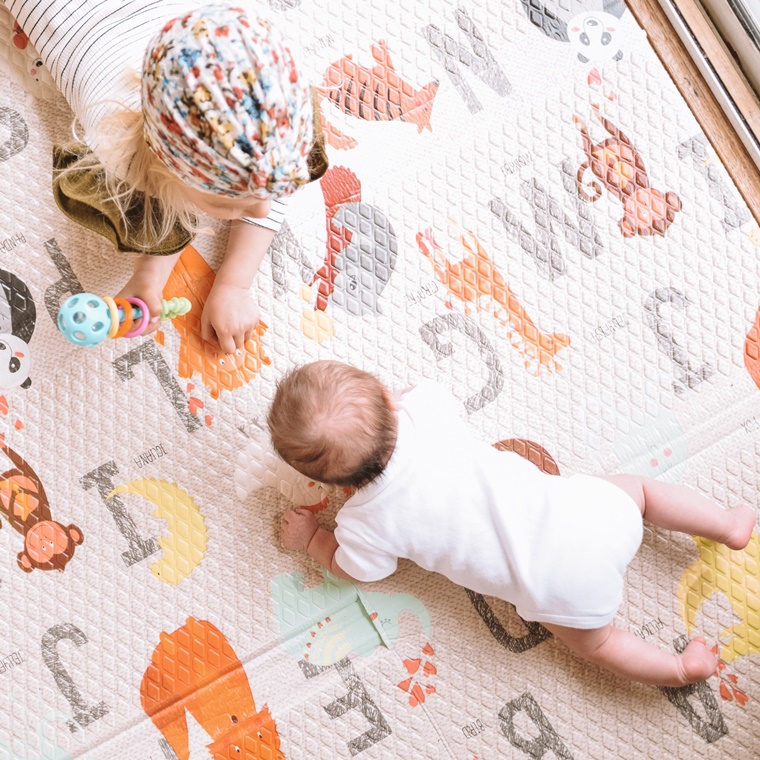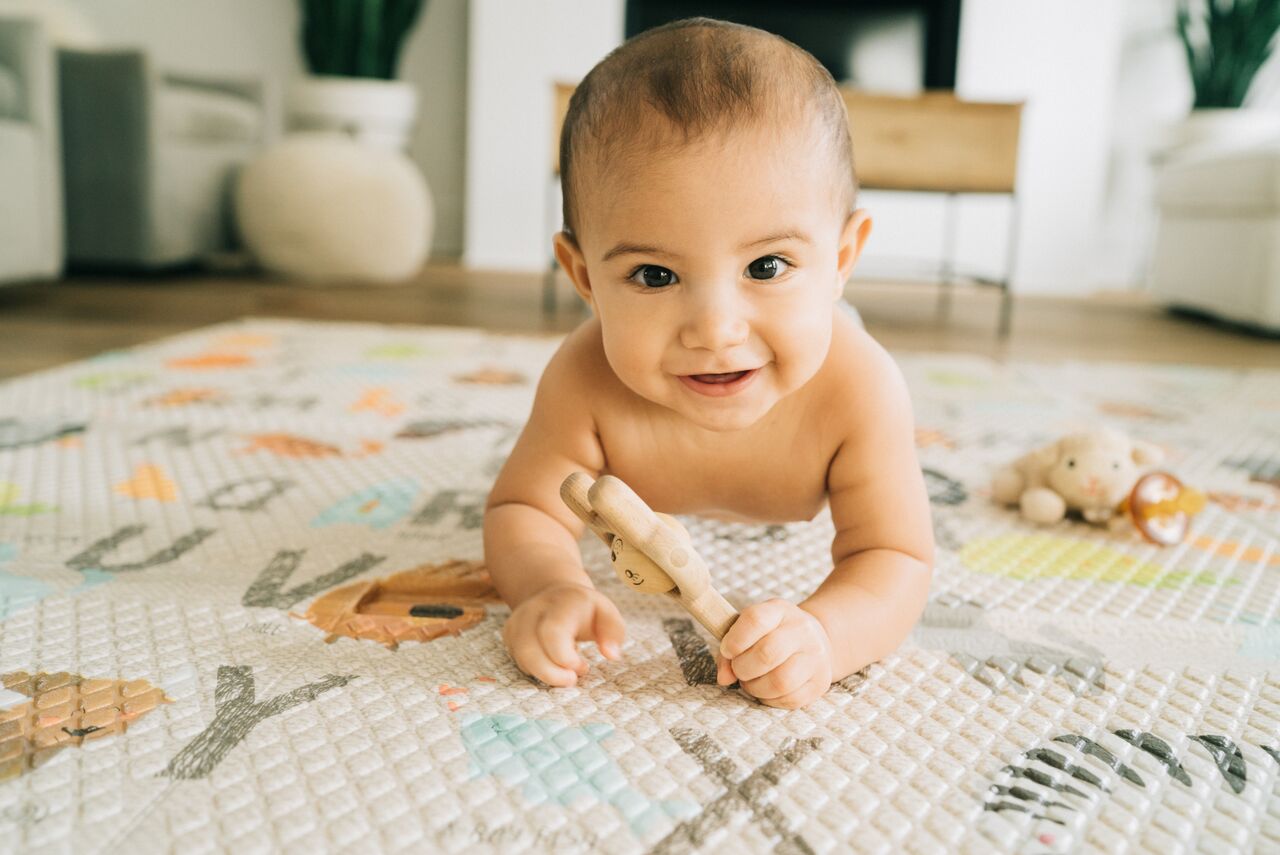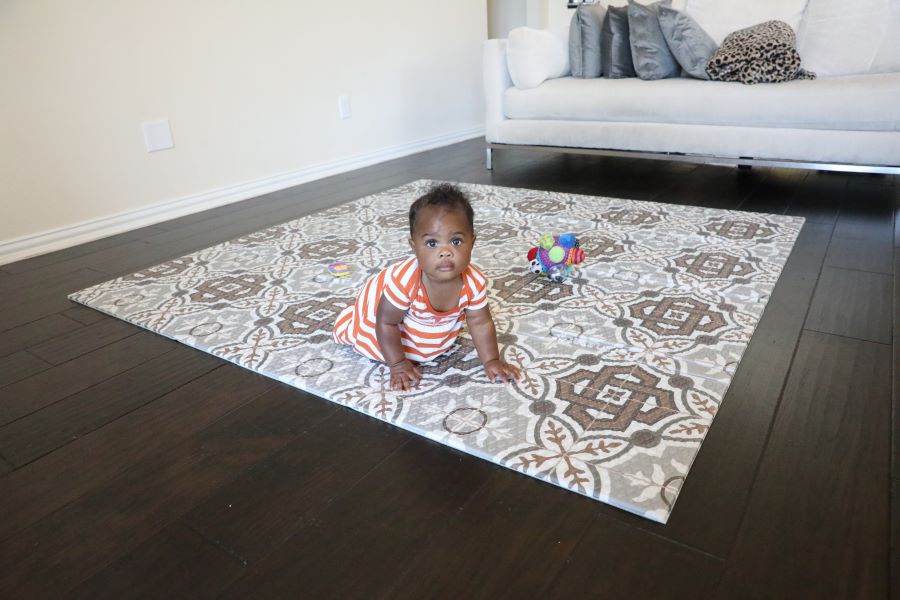FAQ: How to tell if your baby is crawling properly
May 23rd 2019
As a parent, you will always worry about your little loved ones. You just can’t help it. It follows, then, that if you feel like your baby is crawling awkwardly, you might fear a developmental misstep. Most often, those fears are unfounded. Awkward crawling is not usually a symptom of a developmental delay — it’s usually just a testament your baby’s unique character!
While there is no one “correct” way to crawl, there is a prototypical way: contralaterally — left arm in tandem with right leg, and vice versa. But it won’t always work that way. Karen Adolph, a psychology professor at New York University, observed in a study that 25 unique body part combinations can be used to propel a baby forward, according to Parent magazine. And we thought golf swings were complex!
Still, parents will worry. In this article are some of the most common questions we hear from parents about atypical crawlers. Remember, if your baby crawls abnormally, it’s probably not a bad thing. But if you’re concerned about your crawler, you might want to consult an early intervention therapist — because if there is a developmental delay, it’s best to catch it sooner rather than later.

Photo credit: Jenn Hallak
Why is my baby only crawling backward?
A baby in reverse is common, and doesn’t mean she is crawling incorrectly. When she first crawls, a baby might feel more strength in her arms and use them to push herself — or scoot — backward to get where she wants to go.
With practice, she’ll gain strength in her legs and likely begin to crawl forward. If not, no biggie — some babies never crawl forward at all!
Why does my baby army crawl?
The army crawl happens for similar reasons to the backward crawl — in this case it’s because both the baby’s legs and arms are too weak to support her build (something that will change with more movement).
Instead of using their hands, army crawlers typically propel themselves by alternating their elbows and pulling themselves along.
My baby is scooting, rather than crawling. Is that bad?
Nope, not bad. Scooting — by using one leg to crawl while dragging the other — is another form of the early crawling phase. Most often, a baby will advance from a scoot to a full-on hands-and-knees crawl in a matter of weeks. But if your baby does not, worry not. Embrace the scoot!
Is asymmetrical crawling linked to autism?
Many babies crawl with one side pulling more of its weight than the other, or with one leg resting on the ground and the other with foot flat to propel. Some research has tried to link this type of crawling with autism — but asymmetrical crawling of itself is not a sign of autism.
Medical experts say this type of crawling is very common and not “incorrect.” But if a parent is worried it could mean autism, the experts say to look for other signifiers — such as lack of eye contact, slow or no response to their name, an absence of cooing or smiling, among others — before consulting a pediatrician.

Photo credit: Sarah Mattix
Why does my baby crawl in circles?
Crawling in circles can be a good thing! When your baby pushes down with her hands to propel herself in a circle, she is preparing herself muscularly for contralateral crawling to come. As with the army crawl and the backward crawl, circle crawlers simply haven’t yet developed the muscular fortitude for the classic crawl.
Is rolling considered crawling?
Rolling or crawling, it’s great your baby is mobile. But if you want to encourage her to crawl, try placing a toy just out of reach and in her line of sight while she’s enjoying some tummy time. The hope is that she will want to keep the toy in sight as she moves for it — and that would require some semblance of crawling rather than rolling.
Remember, tummy time gets the crawling ball rolling — and crawling is important in motor-skill development.
___________
You shouldn’t worry about your baby’s preferred crawling style, according to the Encyclopedia of Children’s health. Becoming mobile is more important than how the baby does it.
Now that your baby is mobile, be sure your house is childproofed with well-made and deftly placed gates, play yards, play mats, childproofing products, and other precautionary measures. The safety of your little one is paramount!

